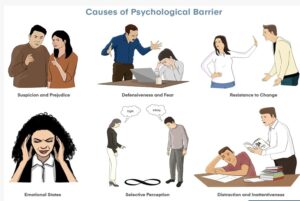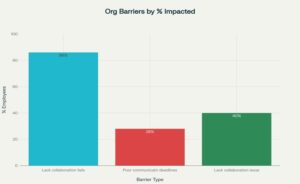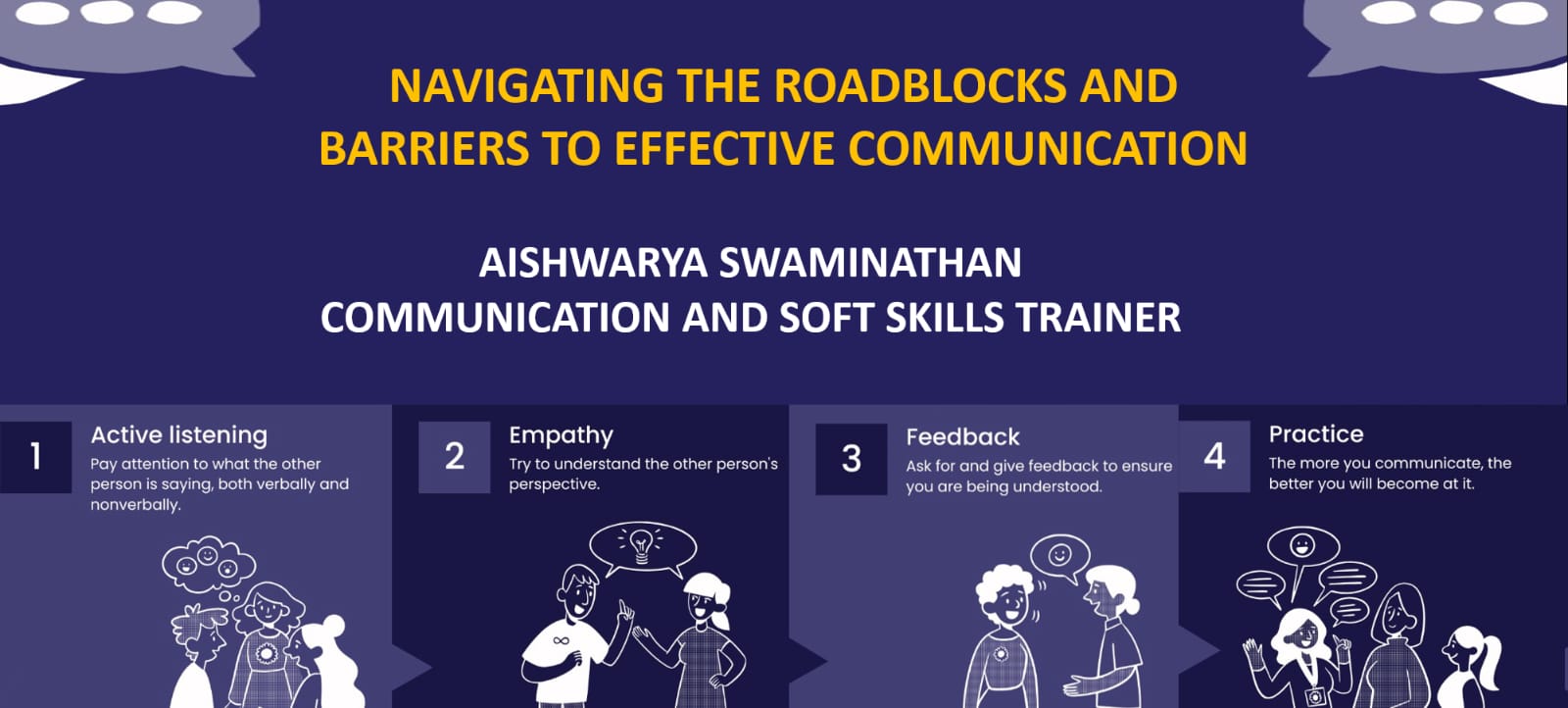“Communication works for those who work at it.” — John Powell
In a struggling fishing village, a village elder saw the struggles and instead of offering advice, organized weekly gatherings for storytelling. A stubborn fisherman recalled a near-miss that was avoided due to past help, prompting more cooperation. Another fisherman, battling loneliness, found comfort in the shared experiences . Over time, these gatherings fostered unity, empathy, and teamwork. As the villagers worked together, their catches improved, and their connection to the sea and each other were restored, proving the power of communication and community.
First Impressions are long Lasting Impressions:
“First Impression is the Best Impression”.Being mindful of the impression you create is crucial, as others often mirror the energy they receive.However, effective communication frequently faces obstacles known as interpersonal barriers.
What are Interpersonal barriers?
Interpersonal barriers are roadblocks that hinder effective communication between individuals, leading to misunderstandings,conflicts and ineffective interactions.
Types of Barriers:
Linguistic Barrier / Language Barriers
- Different languages: Language differences are one of the prominent barriers to communication. These include:
- Different Languages: When people speak different native languages or dialects, communication becomes challenging. One way to overcome this is through language learning—using courses, apps like Duolingo, or interacting with native speakers. Watching foreign films can also help one get accustomed to accents and dialects.
- Jargons: Workplace or industry-specific jargon can confuse people unfamiliar with specialized terms or slang. For instance, phrases like “circle back” or “loop in QA” may be unclear to some, turning these jargon terms into communication walls rather than bridges. Corporate language training can help standardize communication.
- Language Disabilities: Conditions such as stuttering, dysphonia, or hearing loss may restrict verbal communication. Using visual aids, pictures, and alternative communication methods can assist those affected.
Other Tips for Overcoming Language Barrier:
- Use simple, plain language avoiding idioms or complex expressions that might confuse non-native speakers.
- Employ reliable translation services or interpreters when needed.
- Use repetition and summaries to reinforce understanding.
- Do not raise your voice or overemphasize words; communicate slowly and patiently.
- Respect the language challenges of others as these do not indicate incompetence
Cultural barrier:
Have you ever been in that awkward situation where you were going in for a hug, but the other person just wanted to shake your hand? Apart from the embarrassment, have you ever wondered why the two of you were expecting different ways to greet each other?This situation most likely stemmed from cultural differences.
Recognizing and addressing these barriers early is key to fostering clear, inclusive, and respectful communication.
- Non-Verbal Communication: Gestures, facial expressions, and body language are culturally specific. For example, the “OK” hand sign is positive in some Western cultures but might be offensive or misunderstood in South America or Europe.
- Social Customs and Norms: Greetings, hierarchical respect, formality, and levels of directness vary across cultures. Some cultures emphasize formal etiquette and respect for authority while others favor a more informal or direct approach.
- Ethnocentrism: This is the belief that one’s own culture or language is superior and that other cultural practices are incorrect or inferior. For instance, judging other cultures’ food, expecting everyone to speak your language, or perceiving accents as “neutral” only for one’s own group while others are “accented.”
Psychological Barrier :
How many of us can relate to the below scenarios ? I am sure most of us will.
- A student not asking questions in class due to fear
- An employee not sharing an idea because they were previously ignored or criticized during a meeting.
- Someone unable to pay attention during a discussion because they are overwhelmed by personal issues or exhausted.
Psychological barriers are mental and emotional roadblocks within individuals that affect their ability to communicate.

Overcoming Psychological Barriers involves:
- Ensuring both speaker and listener are mentally and physically ready to engage.
- Validating and acknowledging ideas to encourage participation.
- Choosing distraction-free locations for conversations.
- Keeping language simple and messages clear.
- Avoiding assumptions about what the speaker means.
Organisational Barrier :
Organisational barriers are internal obstacles that can arise from rigid hierarchical structures, unclear communication channels, information overload, departmental silos, and cultural or language differences. The chart below visually presents key statistics related to organisational communication barriers. It highlights the impact of different barriers based on recent workforce surveys:
- 86% blame poor collaboration causing failures
- 28% cite communication for missed deadlines
- 40% see it as a major collaboration issue.

Solution:
Promote open communication across all levels, encourage cross-departmental dialogue, clarify roles and policies with accessible guides, and foster collaboration through cross-functional projects and team-building to overcome organizational barriers.
Conclusion:
Overcoming interpersonal communication barriers is essential for building relationships and collaboration. Addressing the barriers of linguistic, cultural, psychological, and organizational obstacles, individuals and organizations can pave the way for a positive and a more diverse and inclusive workplace.





Leave a Reply